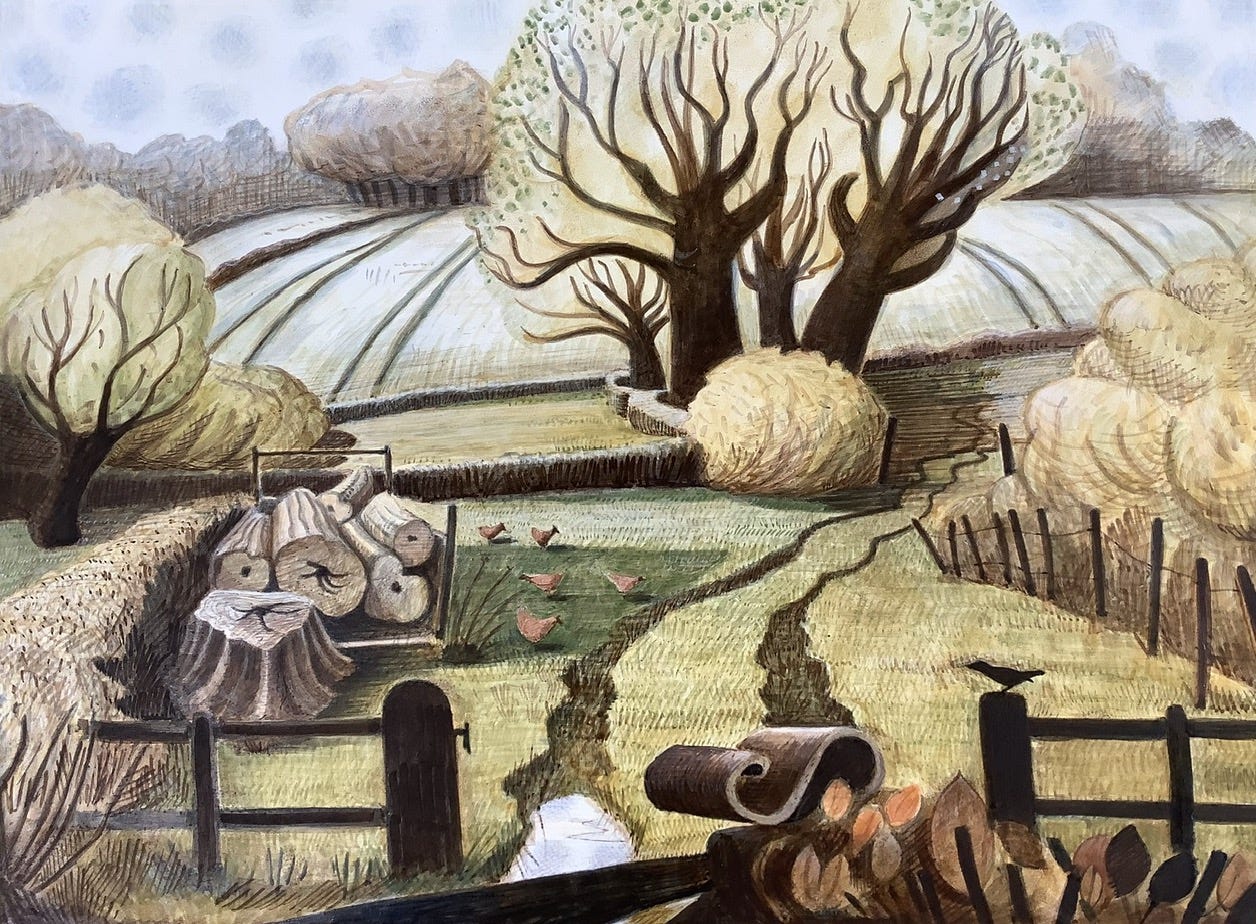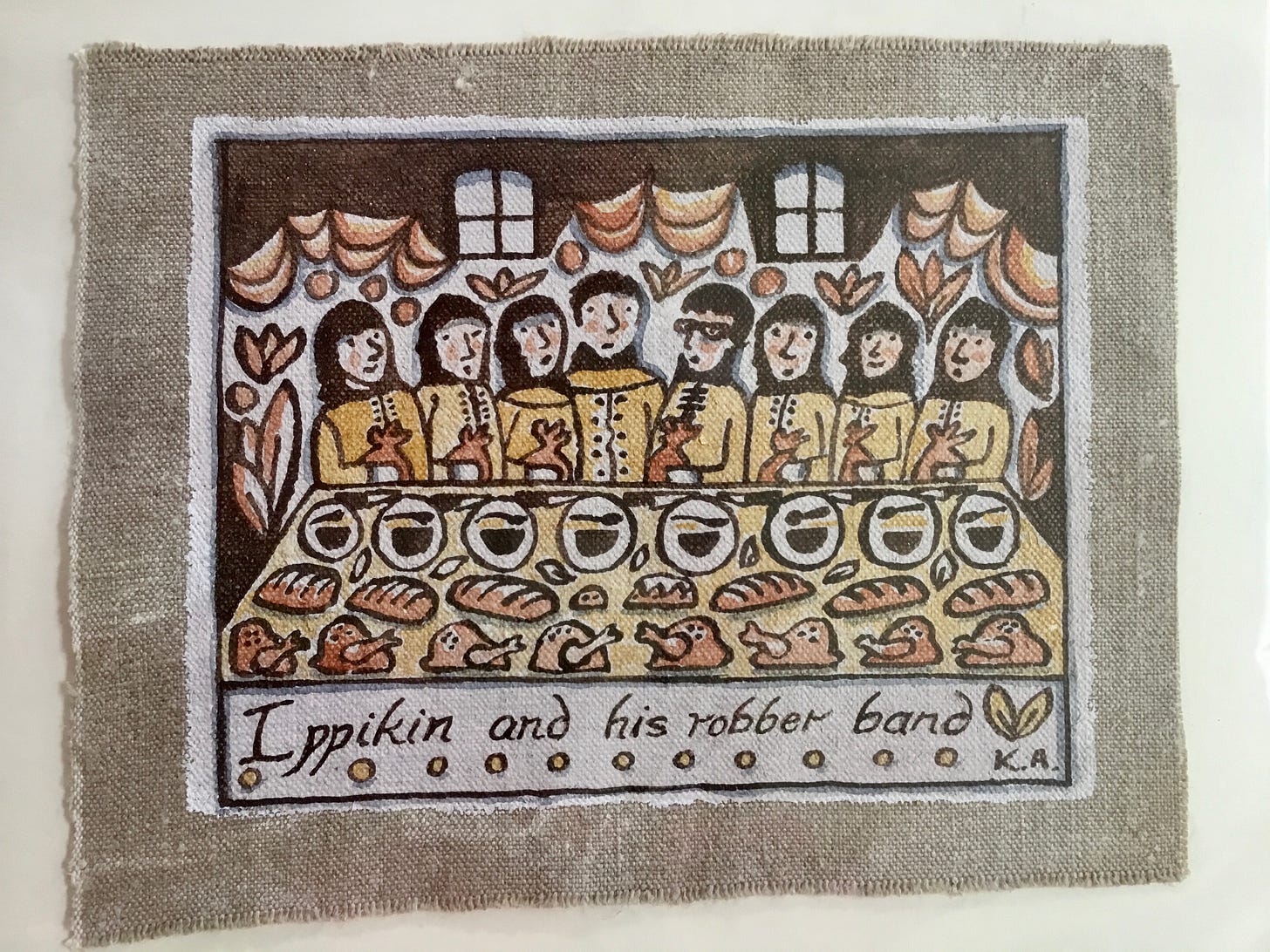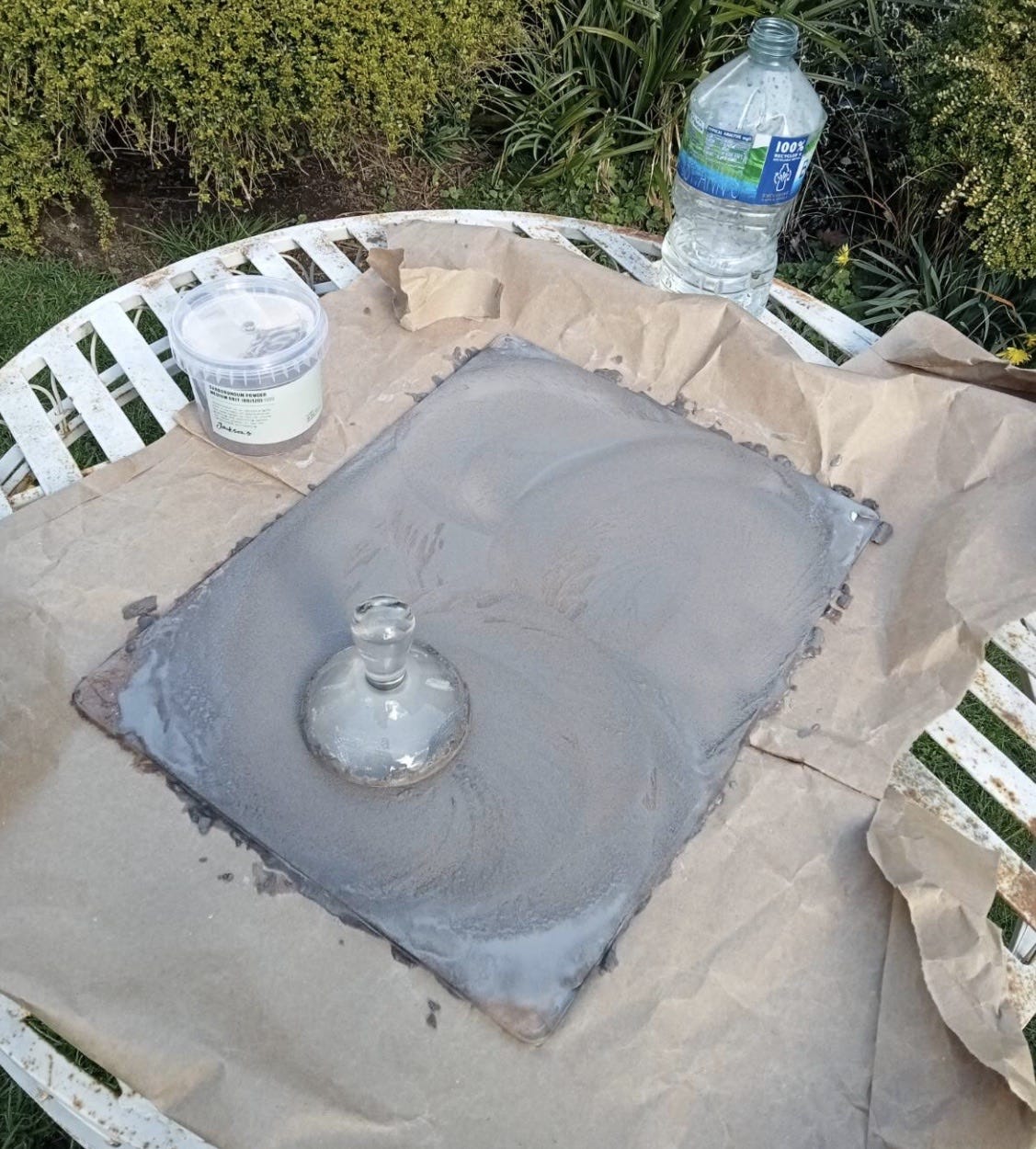Egg tempera paint.
Making, mulling and using it safely.
A couple of years ago I was lucky enough to receive an arts council award to make paintings in egg tempera. Why on earth egg tempera countless people have asked, well, I like to make paintings slowly - slow painting, like slow drawing gives you the time to consider your marks and deliberate what it is that you’re trying to say.
I’ll say it again… egg tempera is a SLOW medium! Having said that, there are ways of speeding things up, but more of that in a later post.
I like to draw in coloured pencil, it’s the layering of colour that I like. Both pencil, egg tempera, and indeed watercolour allow for the light to bounce back from the paper or board. You’re working in fairly transparent layers, adjusting elements of the image as you go, I think the light glowing from egg tempera is what really keeps me going.
A variety of techniques and recipes.
The egg tempera painting technique that is most well known is a layering of tiny brushstrokes that dry phenomenally quickly because they are on an absorbent ground. But there is another way… I had seen the paintings of Sue Prince, an artist and illustrator in Derbyshire and was aware that she was using egg tempera a bit like poster paint! It turned out that it was a technique used in Sweden in the 1700-1800's. The more I looked, the more I liked. I had a workshop with Sue who is very kind and happy to teach. I then went on and researched some more. I felt if I investigated egg tempera through two lens, that of our traditional technique and that of the old Swedish painters, I would come out with an even better understanding of the paint and what it can do.
Having learnt to use gesso ( real gesso - see a previous post) I thought I was definitely one step ahead. Actually I think that if I hadn’t had experience with gesso, the learning curve would just have been too steep!
So there I was, ready to choose my pigments…
I knew about mulling pigment, or thought I did - I bought a lovely glass palette and attacked it with carborundum powder to give it a key. This seemed terrifying at the time, just setting out to ruin the lovely glass, but yes it was the right thing to do! Pour powder and a drop of water on it to make a paste and grind away with the muller to create a tooth. It doesn’t take long, about twenty minutes.
I then looked at the pigments…
Each pigment is unique and behaves differently, that sounds a bit difficult doesn’t it but if you start with a limited palette, you get to know their foibles. Also I intended to teach a workshop about The Swedish painters, and didn’t want anyone to be poisoned by copper etc so I chose a limited palette of non toxic pigments, mainly in earth pigments. Of course in paint form they are non toxic but you still have to be careful not to inadvertently inhale them! But once in paint form my chosen pigments were as just about as safe as bought watercolours would be.
The pigments I chose were:
Yellow ochre
Burnt umber
Red ochre
Indigo
Titanium white
The particle size in the pigments differ greatly, they take different lengths of time to mull. From a couple of minutes to more than five, but it also depends how much pigment you are using.
Do you did up your own pigments?
The pigments that I buy from Jacksons or Cornelissons ( both online) come ready ground so when I use a slab and muller, I am only dispersing the pigments in the water. This is the ‘or thought I did ' comment from above because at first I thought I was grinding the pigments, and I think there's a little of that going on, but really you’re just mostly dispersing them.
You can use a palette knife for some of them but others are better with the glass muller.
Use distilled water to mix, you might be ok depending on your water but here we have a very hard water so I use distilled water, you don’t want to make a painting and then have reactive minerals in the paint.
Horses for courses
If you look online you can see videos showing you how to deal with the egg, but before I go into that, can I point out that many people use different recipes, for example Eliot Hodgkin used oil and varnish, others use clove oil, the white of the egg, all sorts really but this is the recipe I have learnt. The reason why there are variations is that the techniques has been around for so long, people are bound to have claimed they have a NEW recipe!
The Egg (very exciting!)
Separate the yolk from the white of the egg, obviously without breaking! Then carefully pop the yolk onto a paper towel, roll it around a bit to remove the traces of white, scoot it to near the edge of the towel, prick with a pin to pour the yolk without any egg sack into a small container.
Mix with a small amount of distilled water to create an ultra smooth liquid about the texture of single cream.
Mix the mulled pigment with enough water to make it move, add about the same amount of egg and get painting!
Using egg tempera with children!?!
In a future post I’ll explain the gesso ground for the painting, but you can try the paint on paper if you’re keen to get on and if you want to have a play, use watercolours instead of pigments, you still have binder added, but it feels similar. It’s better of course with artists grade watercolour but then isn’t everything?
If using watercolour you can do this as children’s project - watch them squeal with joy at the thought of painting with egg, you could use coffee, or beetroot or other safe ingredients just bear if mind that some will fade or change colour pretty quickly.
I’ll stop there ready to move onto the actual gessoing and painting in a future post. Ooh and more on the Bonadsmålning too!
It all sounds very involved at first but you can mix the paint ahead. Keep it ready to add the egg, just DON'T add egg to the paint and try to store it, it’ll stink! 😂
But my hens’ eggs are really yellow! Doesn’t the paint go yellow?
The yellow of the yolk magically goes away, it doesn’t turn your painting yellow, it’s very strange. It doesn’t matter whether you use brown eggs, white eggs, town eggs or country eggs. I use bantam eggs because I have bantams … and they are small eggs so you don’t waste much.
Give the girls a wave!⬇️
Have a look at Koo Schadler who has a free wonderful resource online, Sue Prince in Derbyshire and Eliot Hodgkin, (deceased). (All easily found online) and gaze with wonder at the pigments at Jacksons and Cornelissens!
Oh and get a good meringue recipe! Or should I say an egg-cellent recipe! 🥚








So interesting Katy! Thank you 🤩